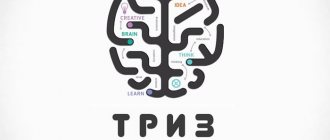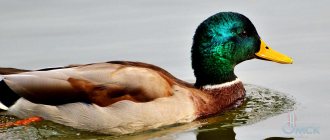Lesson 21. Prokaryotic cell
Methodological development of lessons
Lesson type -
combined
Methods:
partially search, problem presentation, explanatory and illustrative.
Target:
— formation in students of a holistic system of knowledge about living nature, its systemic organization and evolution;
-the ability to give a reasoned assessment of new information on biological issues;
- education of civic responsibility, independence, initiative
Tasks:
Educational
: about biological systems (cell, organism, species, ecosystem); history of the development of modern ideas about living nature; outstanding discoveries in biological science; the role of biological science in the formation of the modern natural science picture of the world; methods of scientific knowledge;
Development
creative abilities in the process of studying the outstanding achievements of biology that have entered into universal human culture; complex and contradictory ways of developing modern scientific views, ideas, theories, concepts, various hypotheses (about the essence and origin of life, man) in the course of working with various sources of information;
Upbringing
conviction in the possibility of knowing living nature, the need to take care of the natural environment, and one’s own health; respect for the opponent's opinion when discussing biological problems
UUD
Personal results of studying biology
:
1. education of Russian civic identity: patriotism, love and respect for the Fatherland, a sense of pride in one’s Motherland; awareness of one's ethnicity; assimilation of humanistic and traditional values of multinational Russian society; fostering a sense of responsibility and duty to the Motherland;
2. the formation of a responsible attitude towards learning, the readiness and ability of students for self-development and self-education based on motivation for learning and knowledge, conscious choice and construction of a further individual educational trajectory based on orientation in the world of professions and professional preferences, taking into account sustainable cognitive interests;
Meta-subject results of teaching biology:
1. the ability to independently determine the goals of one’s learning, set and formulate new goals for oneself in learning and cognitive activity, develop the motives and interests of one’s cognitive activity;
2. mastery of the components of research and project activities, including the ability to see a problem, pose questions, put forward hypotheses;
3. ability to work with different sources of biological information: find biological information in various sources (textbook text, popular scientific literature, biological dictionaries and reference books), analyze and
evaluate information;
Cognitive
: identification of essential features of biological objects and processes; providing evidence (argumentation) of the relationship between humans and mammals; relationships between humans and the environment; dependence of human health on the state of the environment; the need to protect the environment; mastering the methods of biological science: observation and description of biological objects and processes; setting up biological experiments and explaining their results.
Regulatory:
the ability to independently plan ways to achieve goals, including alternative ones, to consciously choose the most effective ways to solve educational and cognitive problems; the ability to organize educational cooperation and joint activities with the teacher and peers; work individually and in a group: find a common solution and resolve conflicts based on coordinating positions and taking into account interests; formation and development of competence in the field of use of information and communication technologies (hereinafter referred to as ICT competences).
Communicative:
the formation of communicative competence in communication and cooperation with peers, understanding the characteristics of gender socialization in adolescence, socially useful, educational, research, creative and other types of activities.
Technologies:
Health conservation, problem-based, developmental education, group activities
Techniques:
analysis, synthesis, inference, translation of information from one type to another, generalization.
During the classes
Tasks
To form students' ideas about two? levels of cellular organization: prokaryotic and eukaryotic.
Introduce students to the structural features of a prokaryotic cell using the example of a bacterial cell.
Characterize the structure of cyanides (blue-green), as representatives of prokaryotic organisms.
Basic provisions
In prokaryotes, the genetic material is represented by one circular molecule)
All bacteria, cyanides (blue-green mycoplasmas) are haploid, i.e. they contain a copy of genes.
In the cells of prokaryotic organisms there are practically no internal membranes; therefore, most enzymes are diffusely distributed throughout the cytoplasm.
Terminology
Ring chromosome-
the hereditary material of a prokaryotic cell in the form of a circular DNA molecule.
Mesosoma-
intracytonplasmic, membrane structures of bacterial cells, formed by invagination of the plasma membrane into the cytoplasm.
Cyanobacteria-
photosynthetic prokaryotic organisms; in some of them the pigment complex is similar to that of higher plants.
Features of eukaryotic and prokaryotic cells
| Structure | Eukaryotic cell | Prokaryotic cell |
| Cell wall | Absent in animals; | Available (different chemically) |
| found in plants | skoy composition from cellular | |
| plant walls) | ||
| Cell membrane | Available | Available |
| Core | Surrounded by a membrane | Nuclear region (nucleoid) |
| not surrounded by membrane | ||
| Chromosomes | Linear: contain protein | Ring; low in protein |
| Endoplasmic | Usually available | Absent |
| regiculum | ||
| Ribosomes | Available | Available (different from ribosomes) |
| eukaryotes) | ||
| Golgi complex | Available | Absent |
| L isosomes | Found in many cells | None |
| Mitochondria | Available | None |
| Vacuoles | Most of them are available to grow | None |
| body cells and in some | ||
| animal cells | ||
| Cilia and flagella | Available in all organisms | Some bacteria have |
| with the exception of higher plants | flagella of a different structure |
Prokaryotic cell - cell of a prenuclear organism
A prokaryotic cell is, in fact, a simply structured organism that retains the features of distant ancestors. They are systematically classified into a separate kingdom, which includes bacteria and cyanobacteria (blue-green algae).
What is so “simple” in the structure of prenuclear organisms?
A prokaryotic cell does not have a nucleus surrounded by its own membrane, mitochondria and plastids. In the center of the cytoplasm there is a nucleoid (nucleotide), which consists of a single nucleoprotein structure containing a circular DNA molecule. This complex is called the bacterial chromosome. The cell of bacteria and blue-green algae itself is separated from the external environment by a dense cell wall or mucous capsule and membrane. The wall of the elementary structural unit mainly consists of the substance murein (formed by proteins and carbohydrates), which acts as an exoskeleton, giving the cell its shape and protecting it from external irritants. The inner membrane performs the following functions: protective, transport, perception of irritations and delimitation.
The internal structure of a prokaryotic cell suggests that the cytoplasm and its composition are much poorer than that of a nuclear (eukaryotic) cell. It contains ribosomes, which are necessary for protein synthesis. There are also membrane structures that perform the functions of missing organelles - mitochondria, endoplasmic reticulum, Golgi apparatus and plastids. For example, a prokaryotic cell has a membrane protrusion called a mesosome. This is where the process of respiration and energy release occurs in bacteria. Also, prenuclear organisms are capable of sporulation, but they do not reproduce with their help. Spores or cysts are dense shells that help bacteria survive unfavorable conditions. To maintain life in unusual conditions, they are able to accumulate nutrients - fats, complex carbohydrates.
A prokaryotic cell can reproduce by division, budding and conjugation
. The method of reproduction depends on the type of bacterium or cyanobacterium. Division and budding are methods that allow you to increase the population size quite quickly. Conjugation, which occurs in Escherichia coli, is a sexual process that contributes to increased heritable variability in microorganisms. Thus, prokaryotes are prenuclear cells that do not have a formed cell nucleus and lack many membrane organelles, but are capable of change. They were the ones who were able to adapt to life in conditions in which no one else can survive - a nuclear reactor, oil wells. A huge number of representatives of the kingdom of shotguns are pathogenic and can cause various diseases in people, animals and plants (dysentery, tonsillitis, tuberculosis). Also, some microorganisms live in symbiosis with eukaryotes (symbiogenesis), for example, nitrogen-fixing nodule bacteria that settle on the roots of legumes.
Questions and tasks for review
What are cell organelles?
What is the basis for the division of all living organisms into two groups - prokaryotes and eukaryotes?
What organisms are prokaryotes?
Describe the structure of a bacterial cell.
How do bacteria reproduce?
What is the essence of the process of sporulation in bacteria?
Biology. Cytology: Structure of prokaryotic cells. Bacteria .
Online learning center
Kingdom
of prokaryotes , sub-kingdom of bacteria
Kingdom
of prokaryotes , sub-kingdom of bacteria
Examination in biology grade 11 Lesson No. 14 Group of prokaryotes.
Kingdom of bacteria , structural
features Resources
V. B. ZAKHAROV, S. G. MAMONTOV, N. I. SONIN, E. T. ZAKHAROVA TEXTBOOK “BIOLOGY” FOR GENERAL EDUCATIONAL INSTITUTIONS (grades 10-11).
A. P. Plekhov Biology with fundamentals of ecology. Series “Textbooks for universities. Special literature".
Book for teachers Sivoglazov V.I., Sukhova T.S. Kozlova T. A. Biology: general patterns
. Biology 100 most important topics V.Yu. Dzhameev 2020
Biology in diagrams, terms, tables” M.V. Zheleznyak, G.N. Deripasko, Ed. "Phoenix"
A visual guide. Biology. 10-11 grades. Krasilnikova
Educational portal
https://cleverpenguin.ru/metabolizm-kletki
School world INFO https://www.shkolnymir.info/content/view/95/9
Nature of the world
https://natworld.info/novosti/babochki-mogut-byt-starshe-cvetov-na-desjatki-millionov-let
FB.ru
https://fb.ru/article/198783/hvostatyie-zemnovodnyie-samyie-yarkie-predstaviteli etogo-otryada
Biolessons
https://biouroki.ru/material/lab/2.html
YouTube website
: https://www.youtube.com/
Presentation hosting
— https://ppt4web.ru/nachalnaja-shkola/prezentacija-k-uroku-okruzhajushhego-mira-vo-klasse-chto-takoe-ehkonomika.html






